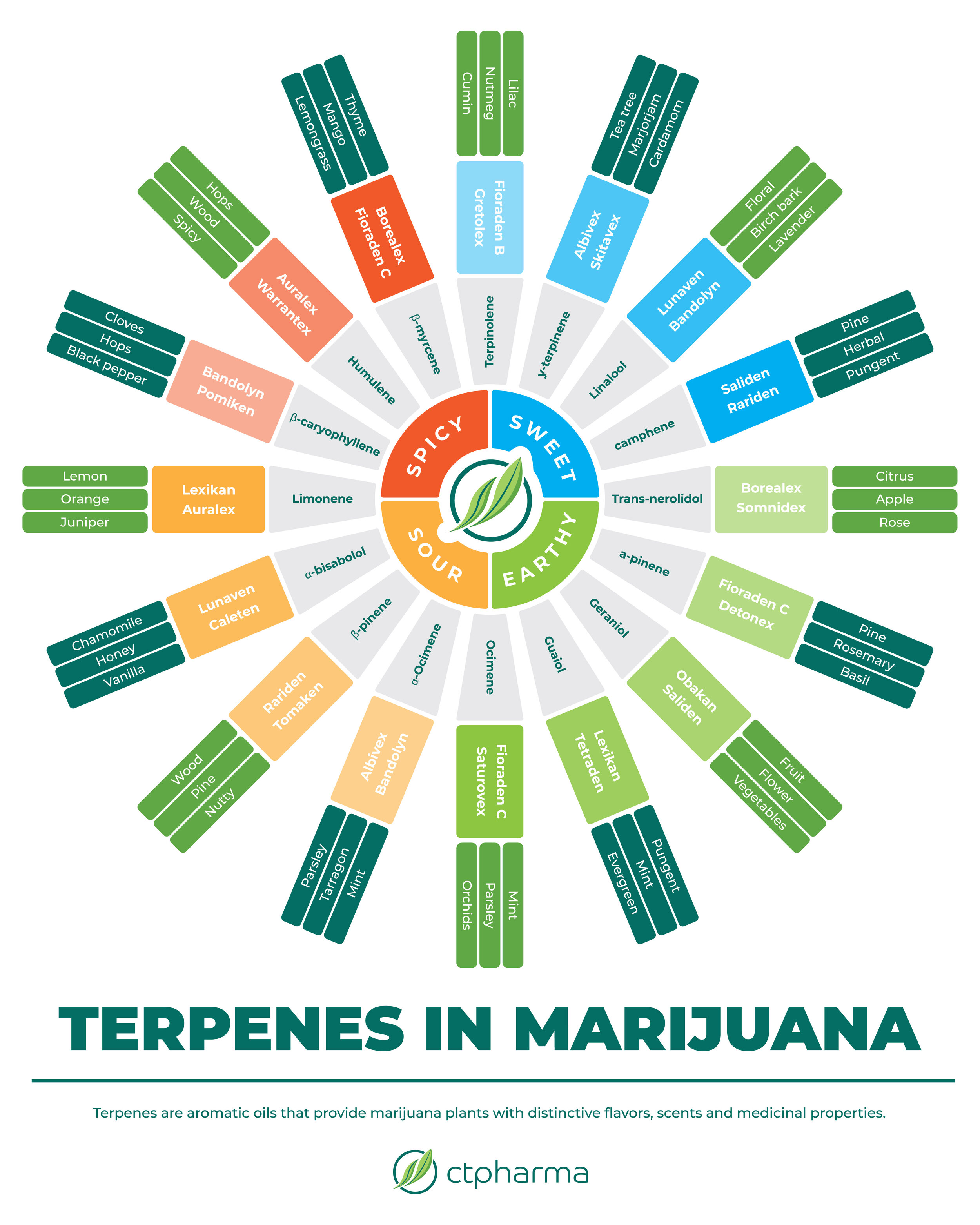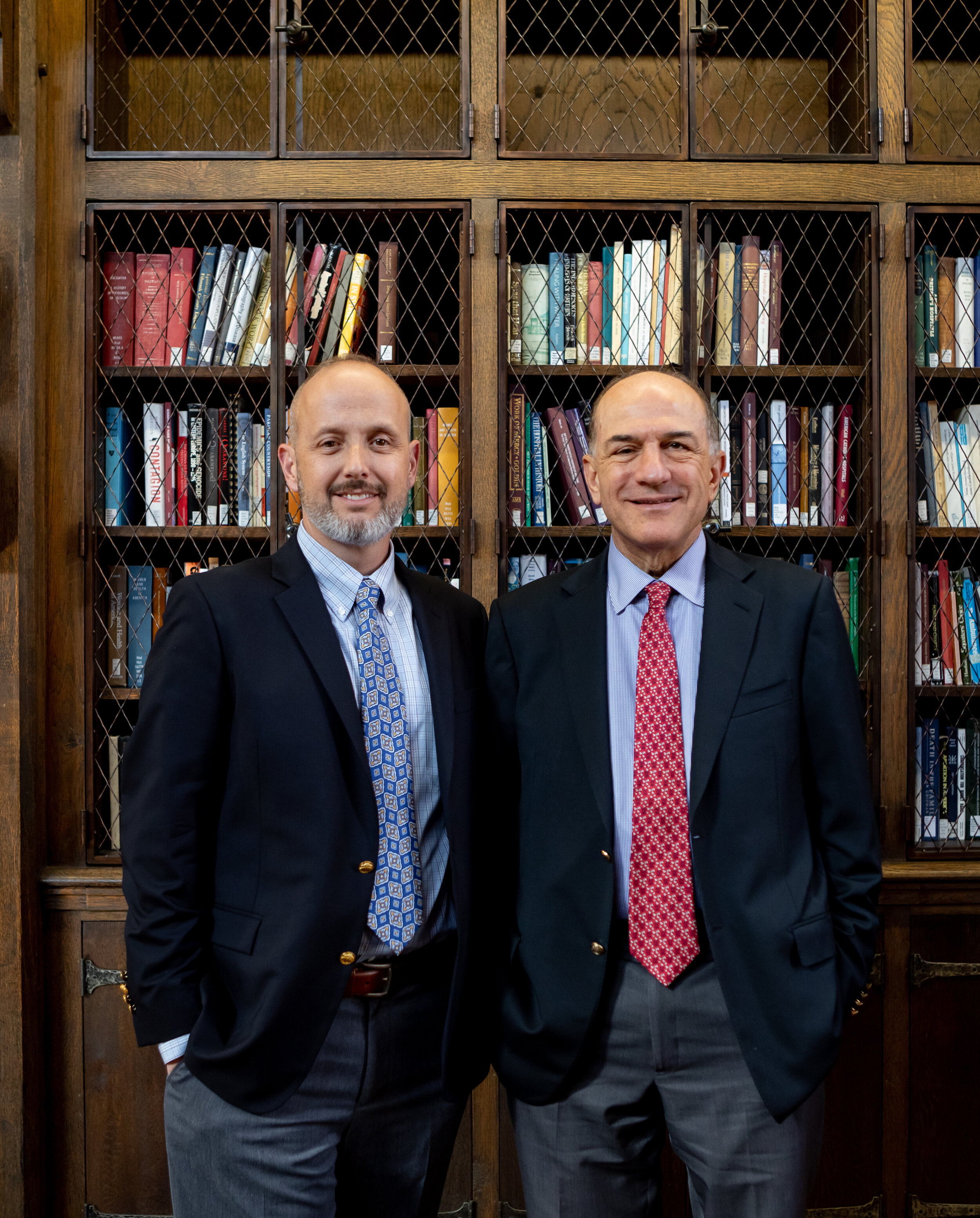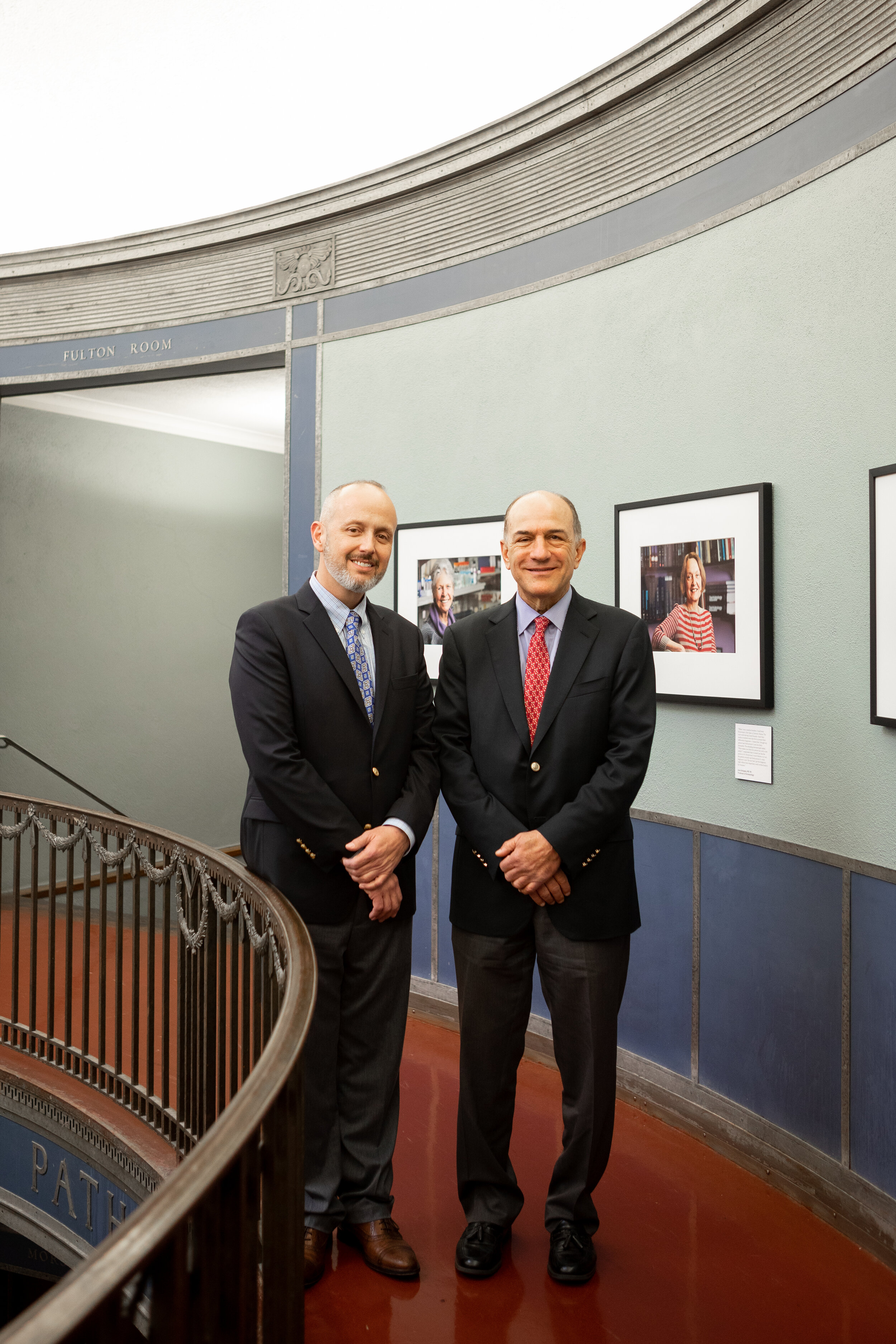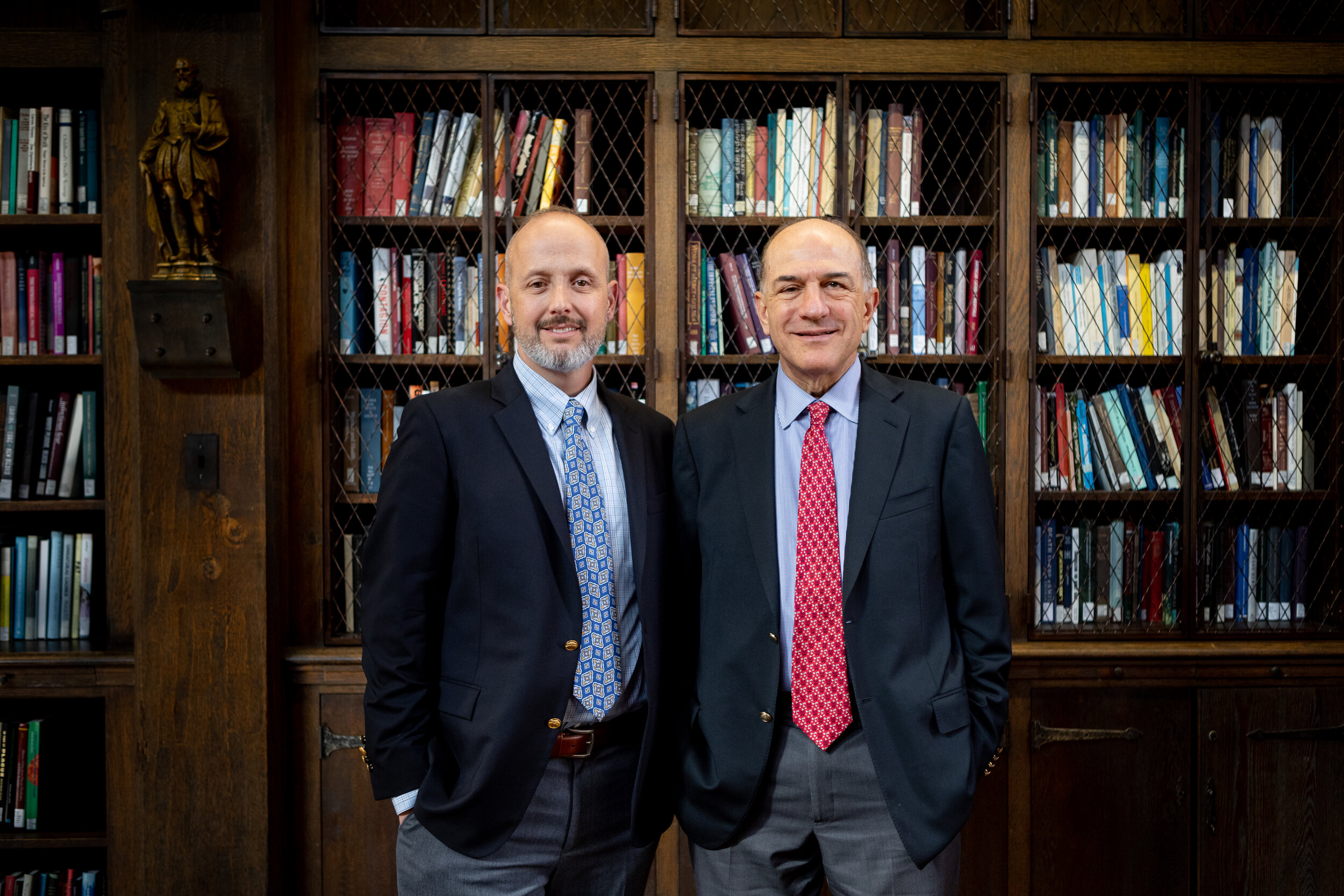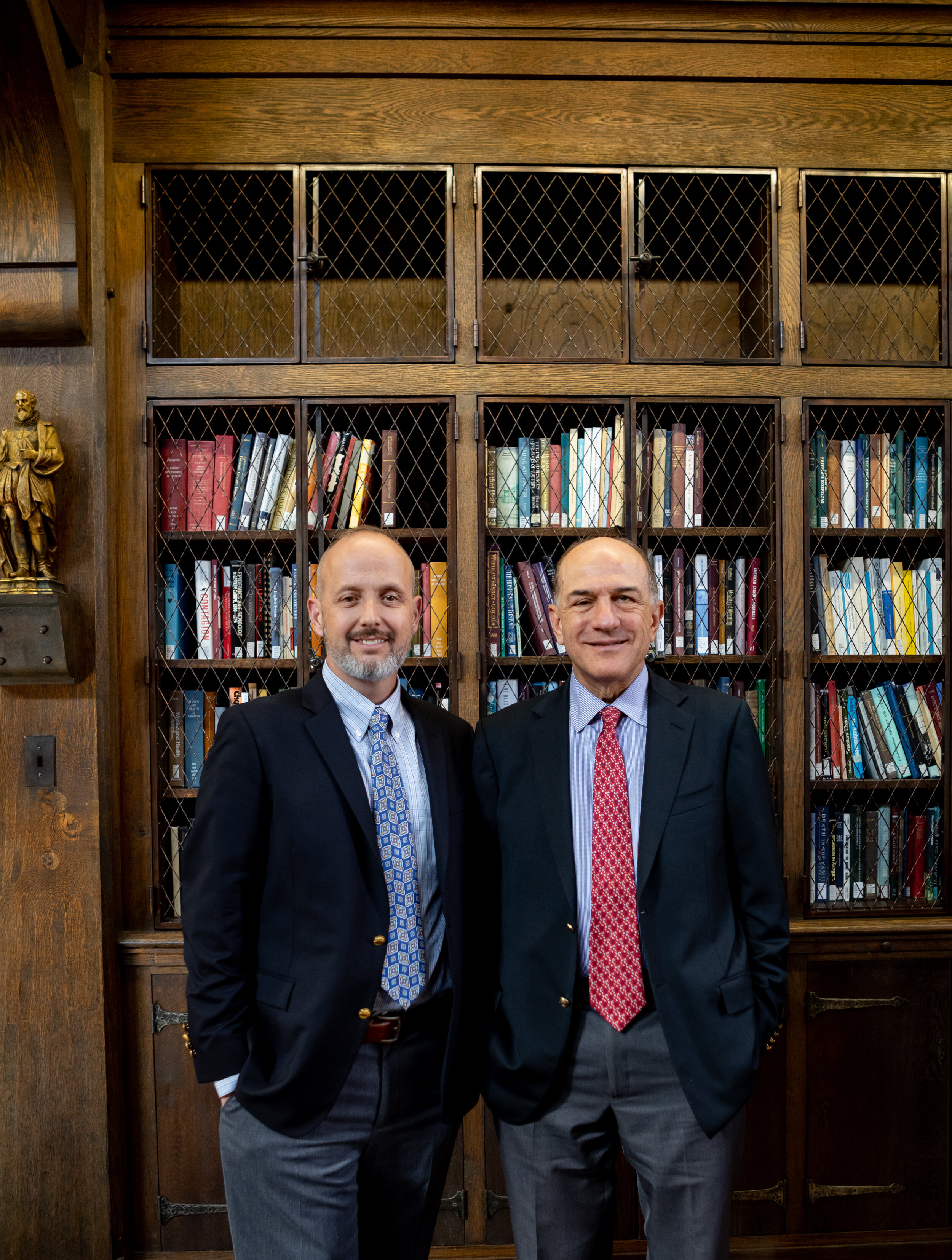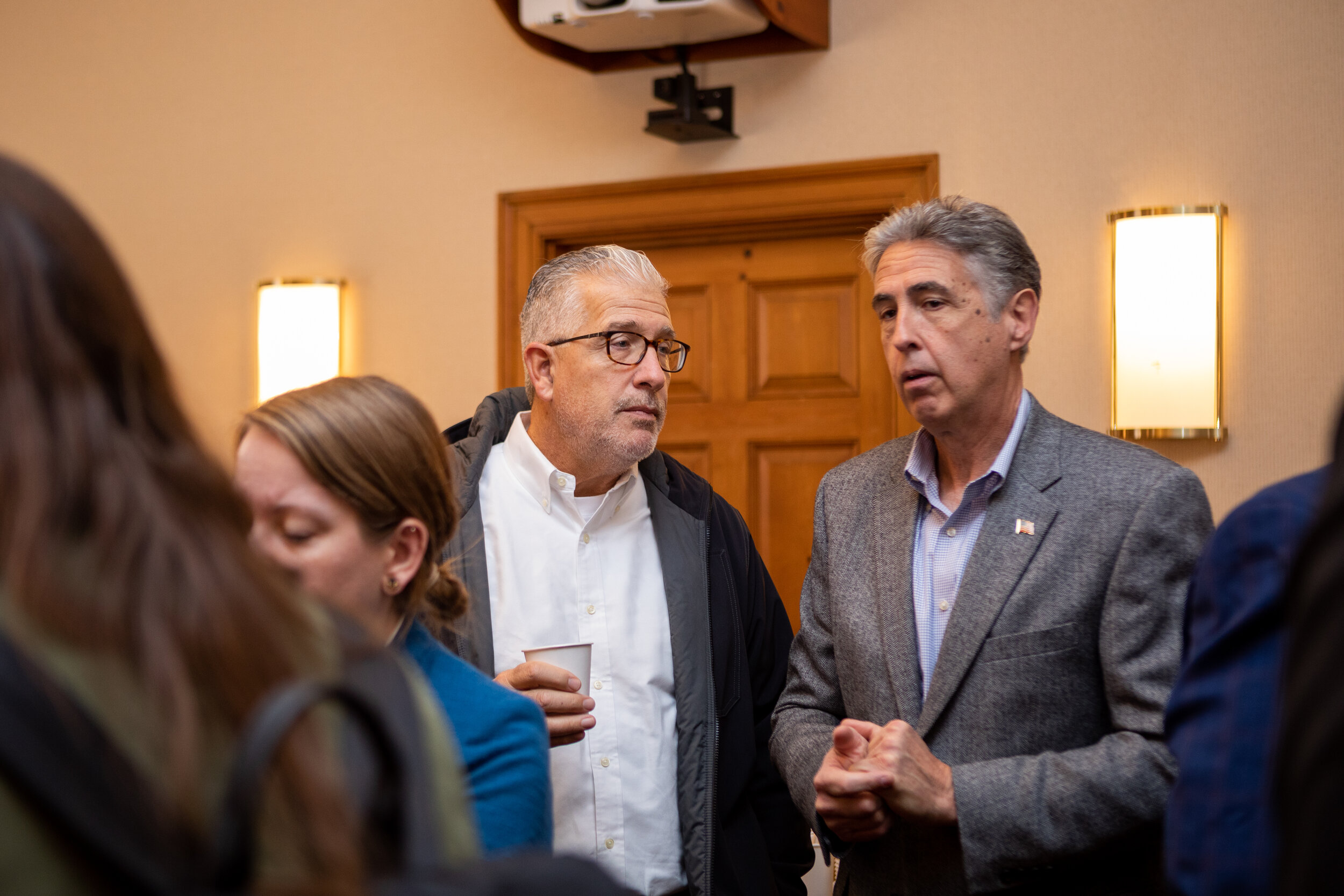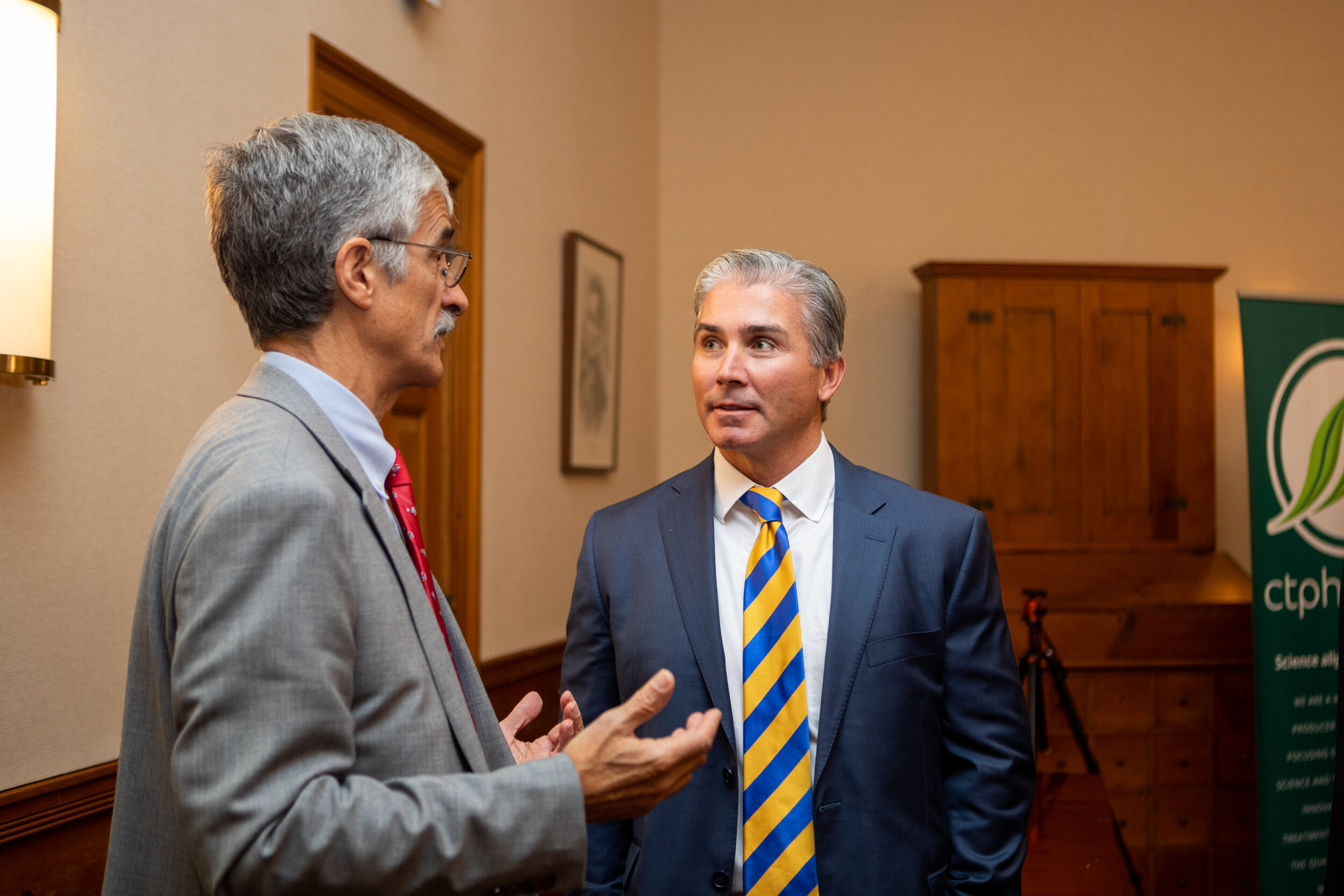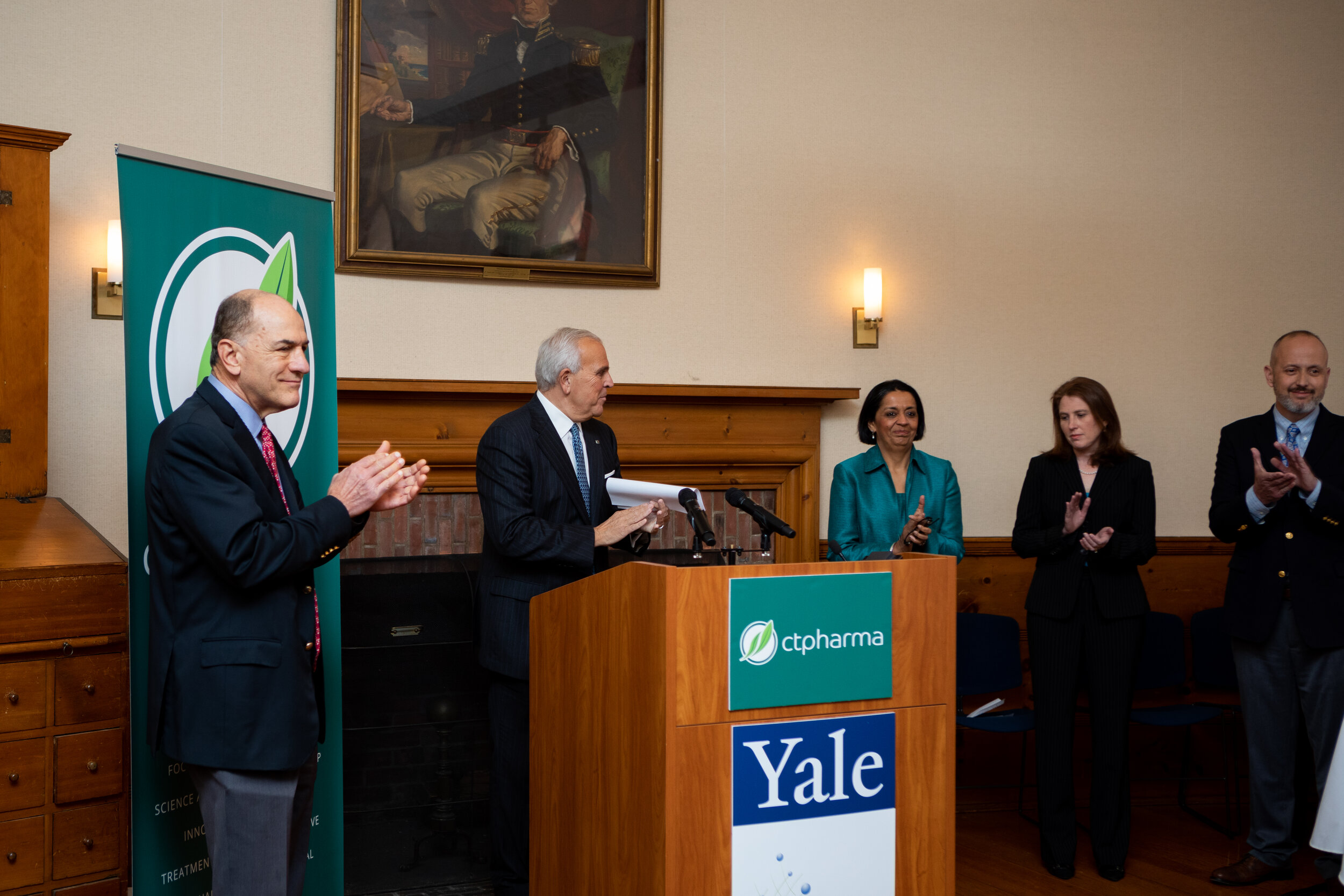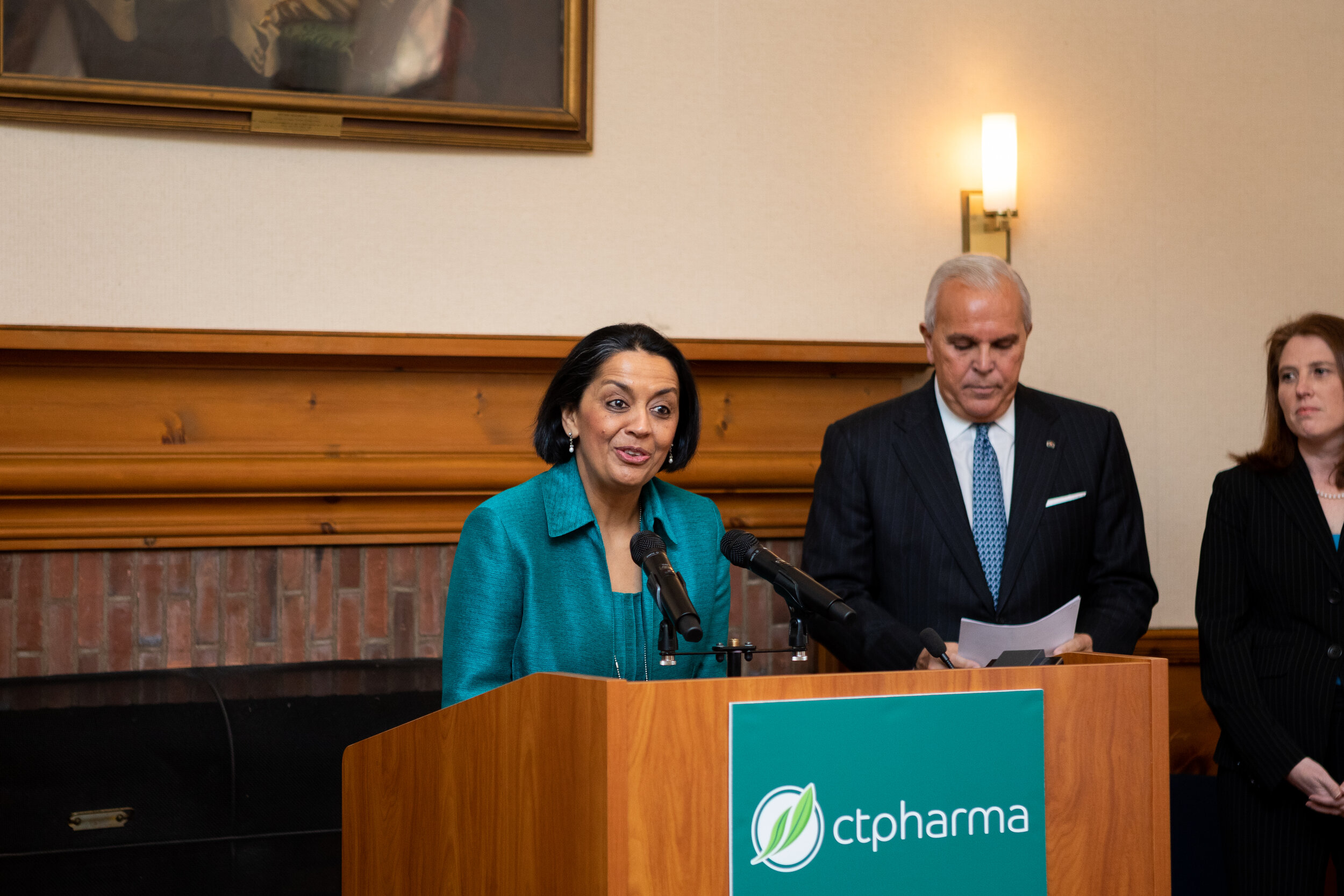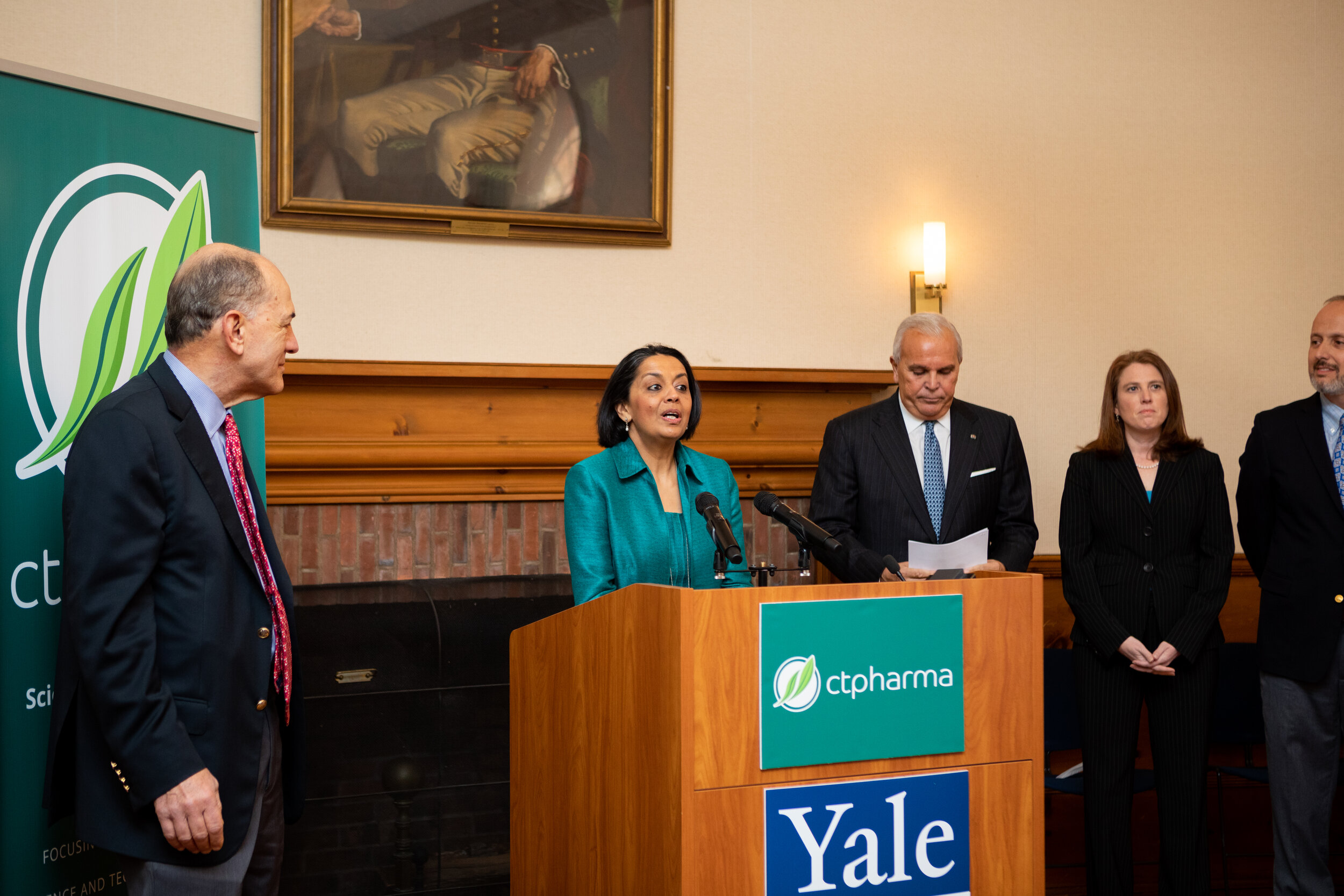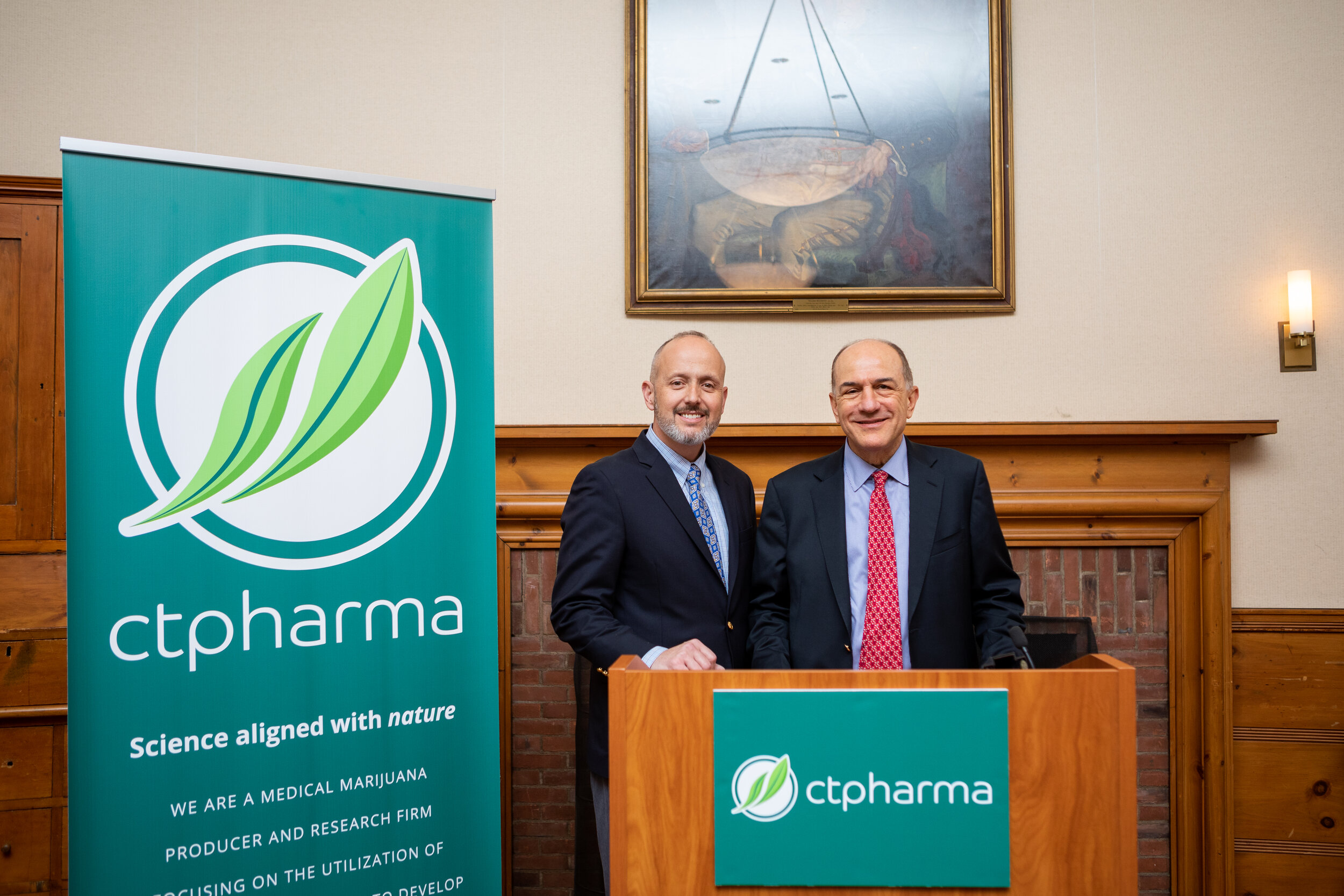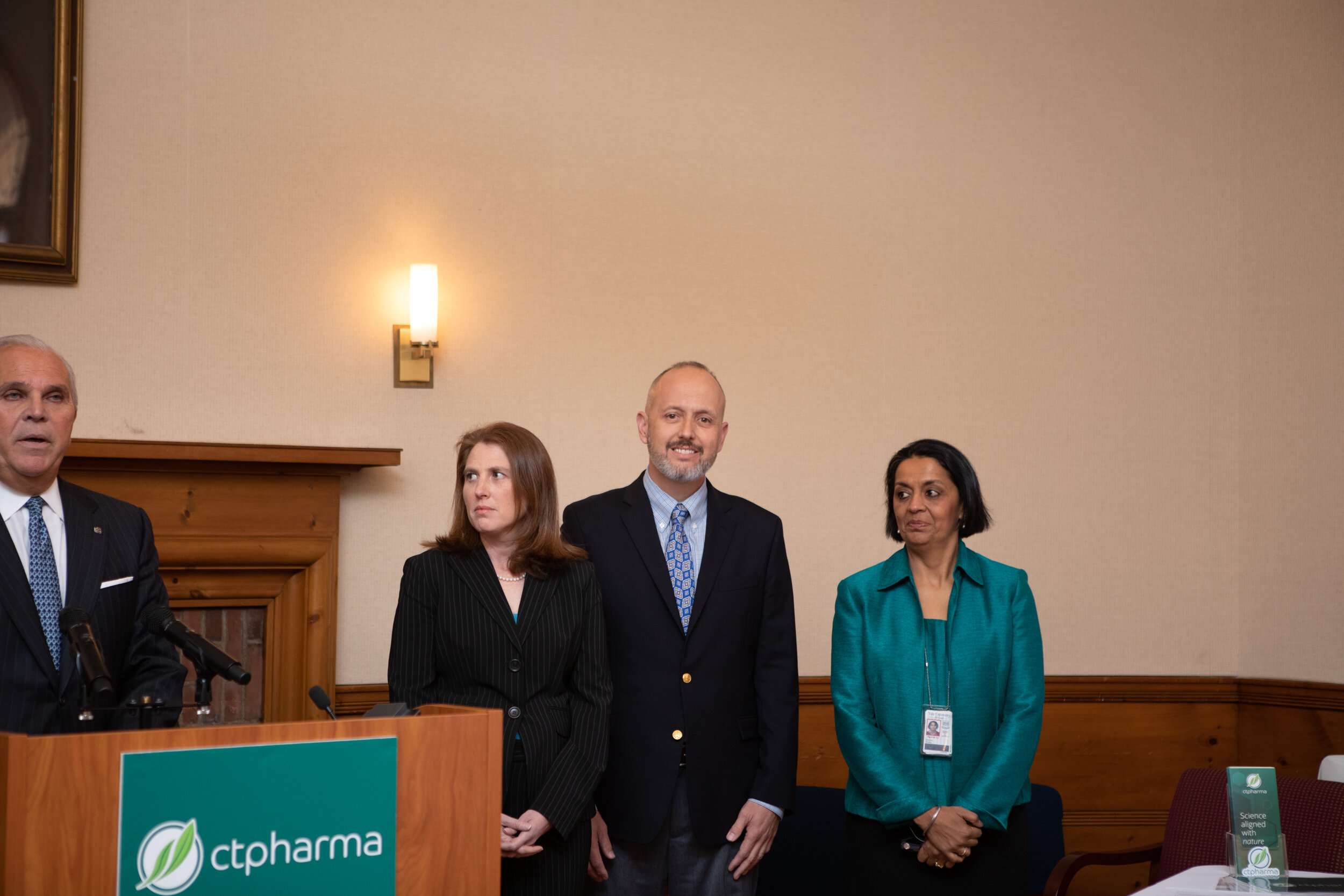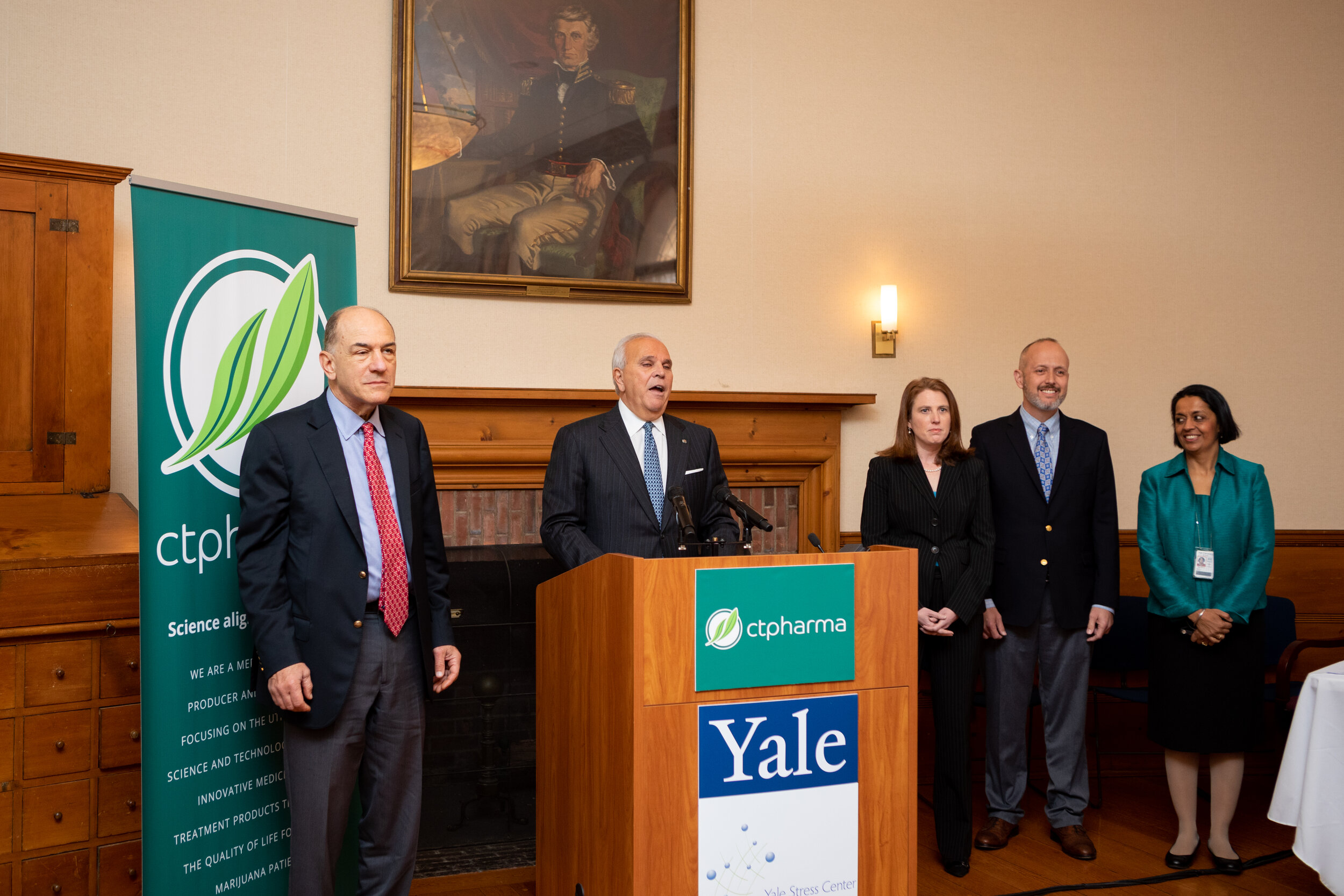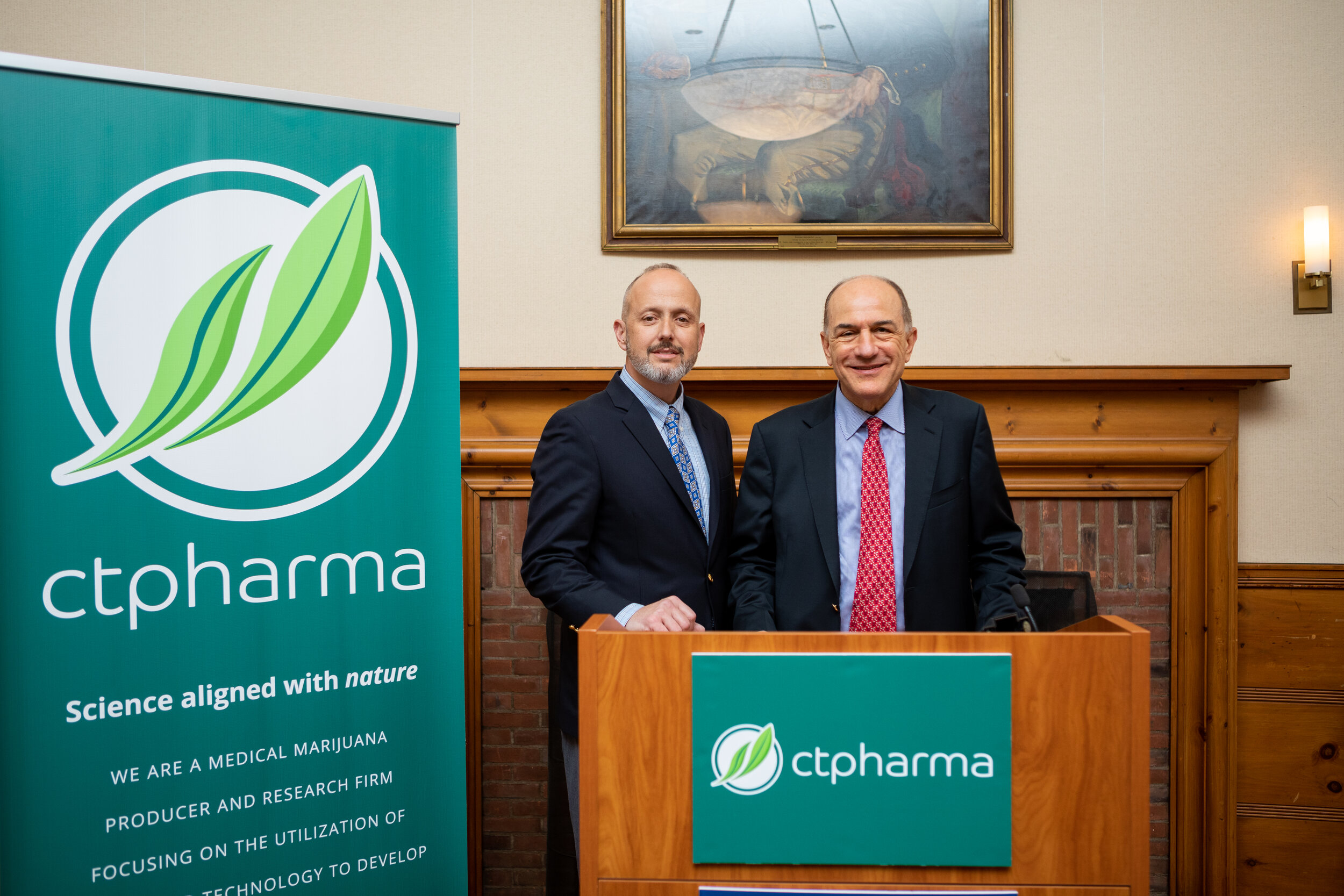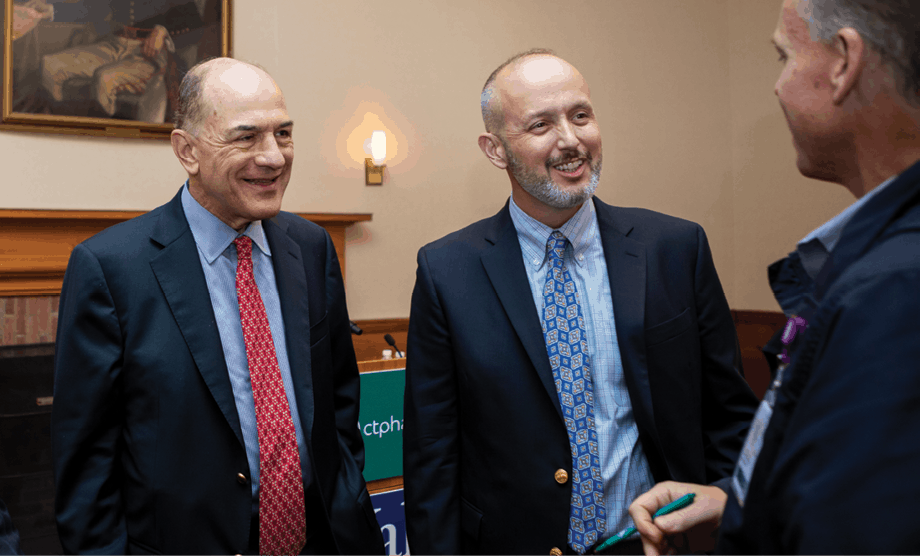NEWS ADVISORY – INFORMATION EMBARGOED UNTIL NOV. 8th – FOR PLANNING PURPOSES ONLY
Yale School of Medicine and CTPharma Announce Groundbreaking Clinical Study with Cannabinoid Medicines on Friday, November 8th at 10:30 a.m. at Yale School of Medicine
Investigational New Drug (IND) trial will study a variety of medical conditions related to stress and pain.
Who:
· Michael Fedele, Board Chairman, CTPharma
· Michelle H. Seagull, Commissioner, Department of Consumer Protection
· Tom Schultz, CEO, CTPharma
· Rino Ferrarese, COO and Scientist, CTPharma
· Dr. Rajita Sinha, Lead Investigator, Yale School of Medicine
What: Announcement of Groundbreaking Medical Marijuana Clinical Study
When: Friday, November 8th at 10:30 a.m.
Where: Beaumont Room, Yale School of Medicine, 133 Cedar Street, New Haven.
Yale University School of Medicine and CTPharma will conduct a Phase One clinical study of the effectiveness of various medical marijuana formulations initially aimed at alleviating stress and pain in patients. This study is the first approved by the Department of Consumer Protection’s Medical Marijuana Research Program to study stress and mental health related issues.
The study’s initial phase is a safety and dosing study, in this case focused on pain and stress. The study will be the first of its type on human subjects, a double-blind, randomized, placebo-controlled clinical study using medical marijuana with an FDA-approved protocol.
The clinical study will address other conditions as appropriate based on the results of Phase One. Those conditions may include Post Traumatic Stress Disorder and opioid-replacement.
Clinical Study Summary:
Study 1:
Adult men and women aged 21-45 who are recreational marijuana users but do not meet criteria for cannabis use disorder will complete six separate inpatient laboratory sessions one week apart during which they will be assigned to receive placebo or acute doses of either 40 mg or 100 mg of CBD, and three separate combinations of CBD and low dose THC, in a random, counter-balanced, double-blind, cross-over design over a 6-week period. Sessions will be completed one week apart to allow for an adequate washout period between sessions.
Study 2:
Adult men and women ages 21-60 with chronic pain (not fully controlled by opioid pain medication), will be recruited and randomly assigned to receive the most tolerable CBD/THC dose or placebo repeated dosing for 7 days. On day 1, 3 and 7 of the 7-day dosing, subjects will complete laboratory sessions. Subjects cannot meet criteria for cannabis use disorder or other addictive disorders.
Study outcomes/endpoints
Safety and side effects including vital signs of heart rate, systolic and diastolic blood pressure and clinical symptoms will be assessed. Laboratory chemistry will be completed on all participants. In addition, blood levels of CBD and THC and their metabolites will be assessed.
The study will measure the medications’ main pharmacokinetic characteristics, how the drugs move through the body, such as peak plasma concentration (Cmax), time to reach peak serum concentration (tmax) and serum elimination half-life (t1/2). Repeated urine sampling will allow estimating clearance and excretion functions.
Additional outcomes will be subjective drug effects measures, stress and pain ratings, cortisol and ACTH responses and cardiovascular measures during laboratory challenge and after ingestion of study doses at repeated timepoints.
Background:
The background work for CTPharma’s current project work involving human subjects began during 2016 with Dr. Rajita Sinha at the Yale University School of Medicine.
The Yale University School of Medicine and CTPharma filed an Investigational New Drug Application with the FDA which required substantial information about the pharmaceutical characteristics of the medication to be studied and about its use in the study.
In 2017, Dr. Sinha at Yale University in collaboration with CTPharma received FDA approval for the Investigational New Drug protocol, “The safety of acute and repeated doses of natural medicinal marijuana products and effects on subjective and physiological responses to stress and pain.”
In October 2019, the Yale University School of Medicine and CTPharma received approval from the Connecticut Department of Consumer Protection to proceed with the study.






